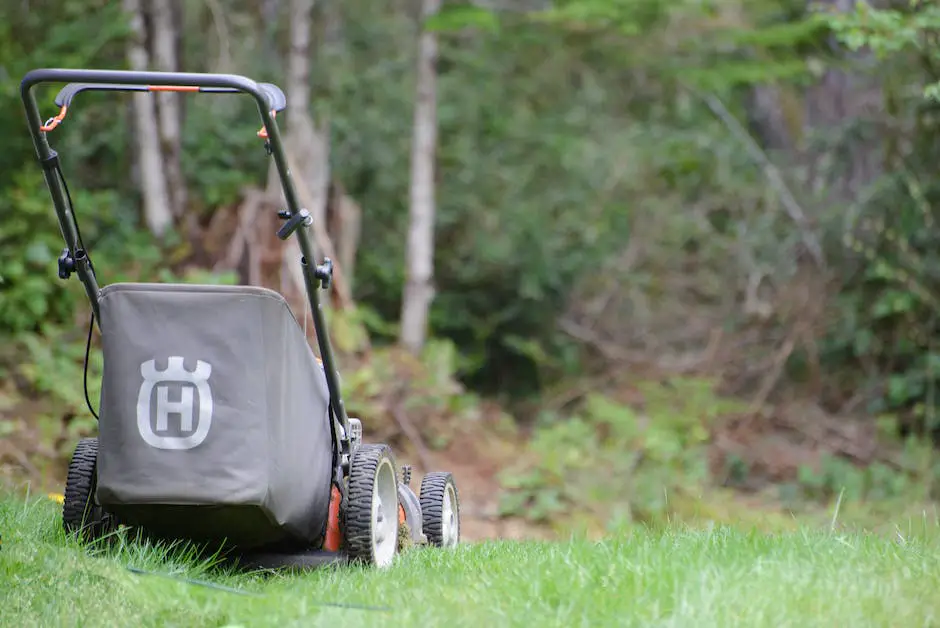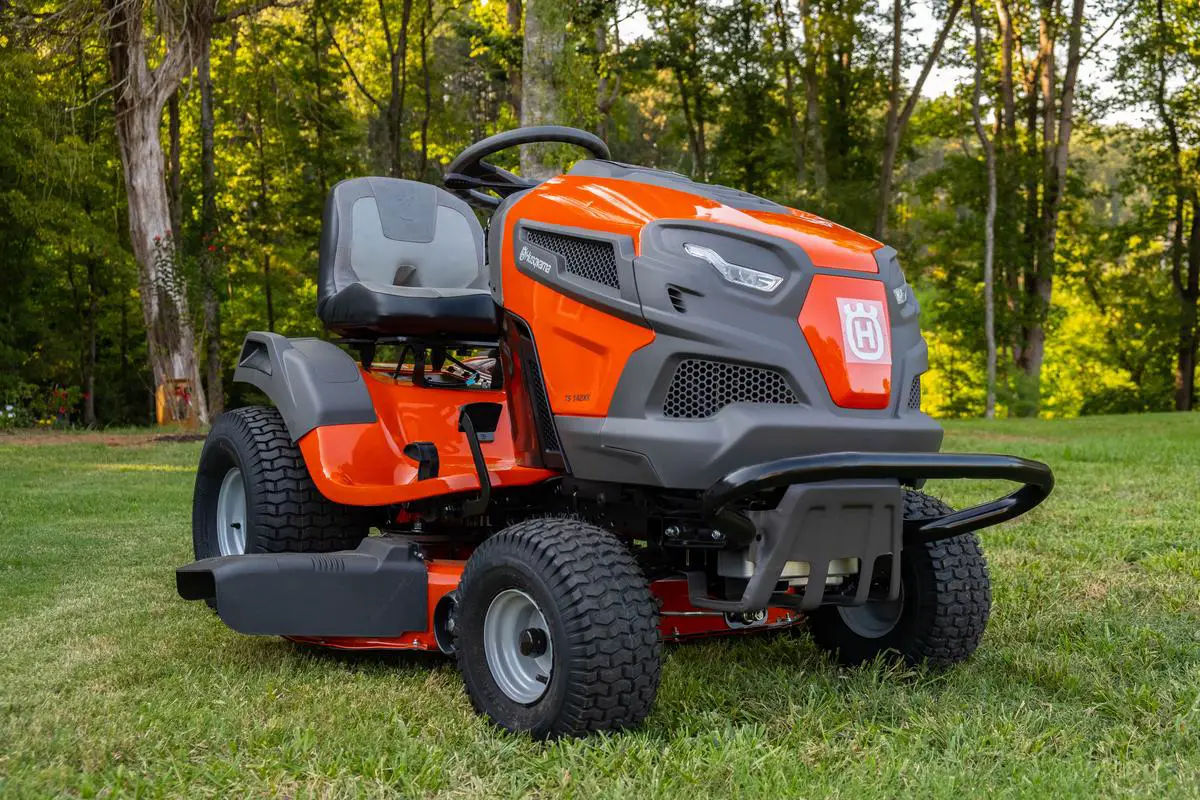Whether you’re a proud homeowner aiming to keep your yard in top shape or an enthusiast of horticulture, you’ve probably encountered various types of self-propelled lawn mowers, the most common of them being self-propelled. When it comes to simplicity, convenience, and precision, few can compete with these machines’ efficacy.
This comprehensive guide is designed to demystify the fascinating world of self-propelled lawn mowers, discussing their diverse types, maintenance routines, features to consider when purchasing, and a sneak peak into their future.
Regardless of whether you’re a novice eager to learn or an experienced user looking to up your game, there’s always something new to glean about these devices that promise to transform your lawn care experience.
Understanding Different Types of Self-Propelled Lawn Mowers
If the sweet smell of freshly cut grass brings joy to the heart and you have an appreciation for well-manicured lawns, welcome to the journey of unraveling the intricacies of self-propelled lawn mowers. No more back-breaking pushes, rather these mighty machines propel themselves, making your job easier.
The modern lawn enthusiast’s indispensable ally, self-propelled lawn mowers, exists in a spectrum of diverse types. They are primarily categorized into three variants namely, Front-Wheel Drive (FWD), Rear-Wheel Drive (RWD), and All-Wheel Drive (AWD) based on their driving mechanisms.
- Front-Wheel Drive (FWD)In FWD mowers, power is delivered to the front wheels. They are relatively lightweight, and maneuvering them is a breeze, particularly on flat terrains. When it comes to maintaining straight lines, their precision is unmatched, making them perfect for smaller lawns. However, they may prove less efficient for uphill mowing or if the lawn bag gets heavy, as the front wheels can lose traction.
- Rear-Wheel Drive (RWD)Contrary to FWD mowers, RWD versions deliver power to the rear wheels. These machines are the perfect partners for lawns with slopes. Since the rear wheels handle the drive, these mowers maintain constant traction regardless of the bag’s weight. Moreover, they are ideal for generating lawn stripes—a delight for aesthetically inclined lawn lovers.
- All-Wheel Drive (AWD)As the name suggests, AWD mowers can drive all the wheels simultaneously. These beasts tackle all kinds of terrains and slopes with considerable ease. They also have the option to switch between FWD and RWD, making them incredibly versatile.
FWD, RWD, or AWD, which one to pick? That depends on several factors – the size and topography of your lawn, the kind of grass, your stamina, and yes, your budget too.
FWD mowers are budget-friendly, lightweight, and adept at manicuring flat, small patches. RWD versions are perfect for medium-sized yards, especially the ones with slopes.
They excel in maintaining traction and are great for producing those aesthetically pleasing lawn stripes. AWD mowers, although a bit pricey, are capable of handling substantial, hilly terrains and tough grass varieties with relative ease.
Remember, it’s not just about having a mower that gets the job done; it’s equally about having a mower that does the job right, without causing undue stress on the user. Take the time to evaluate the individual needs of your lawn – after all, every blade of grass counts. Choose wisely and happy mowing!

Maintenance & Troubleshooting of Self-Propelled Lawn Mowers
Self-propelled lawn mowers have been a boon for those looking to keeping their lawns tidy without needing to physically push their mowers. However, like any machinery, they need regular maintenance and can run into issues.
Thankfully, with a bit of patience and some additional knowledge, anyone can troubleshoot common issues and maintain their machine to ensure an efficient and long-lasting performance.
As the backbone of the machine, the engine in a self-propelled mower demands regular attention. Before the start of each mowing season, it’s recommended to change the engine oil and the spark plug. It’s an easy process that could potentially add years to the life of the mower.
Also, cleaning or changing the air filter, as well as ensuring the gas tank is clean and fully fueled with fresh gas, enhances the mower’s performance.
Now, onto the guts of the self-propelled mower- the drive system. Often, maintaining this part of the machine involves the cleaning and adjustments of two primary parts: the belt and the wheels.
Over time, the drive belt will likely need to be replaced as it becomes worn and inefficient, resulting in a slower moving machine. While this can seem daunting, with the correct parts and a handy manual, it’s a surprisingly doable fix.
Similarly, the wheels are fundamental to the mower and are one of the most commonly replaced parts. Always ensure that the mower’s wheels are rolling efficiently and that there’s no obstruction in their path. Regularly checking for resistant or jerky movements could save major repair expenses.
However, following a maintenance routine doesn’t necessarily mean the elimination of issues. But, being able to troubleshoot these problems can extend the viability of the mower and save valuable time.
One such scenario is when the mower is hard to start or doesn’t start at all. Here, it’s critical to first check the basic elements such as the spark plug, fuel line, and air filter. Here would also be a good time to refer to the troubleshooting guide in your mower’s manual, as solutions can often vary based on the make, model, and type of the mower.
Another relatively common issue is when the mower’s speed becomes noticeably reduced. This could be due to a drive belt that’s worn out or come loose. The solution here would be to readjust the belt tension or replace it altogether if necessary.
Last but not least, if the mower seems to not be cutting the grass evenly or leaving behind uneven patches, chances are that it’s time to replace or sharpen the mower blades. It’s a relatively straightforward task that aside from a bit of effort, generally requires a simple blade sharpening kit.
In conclusion, possessing the right knowledge and understanding of how to properly maintain and troubleshoot a self-propelled lawnmower can ensure longevity and flawless performance, keeping that lawn looking pristine at all times. With a dash of patience and regular attention, it becomes less of a chore. Happy mowing!

Features to Look for When Buying a Self-Propelled Lawn Mower
Key Features to Prioritize When Purchasing a Self-Propelled Lawn Mower
As we delve deeper into the world of self-propelled lawn mowers beyond the basic types and maintenance practices, it becomes essential to shed light on key features that will guide hobbyists while buying these advanced garden tools. These features can significantly enhance mower performance and user experience, making your next mowing session comfortable, efficient, and effective.
Speed Adjustments
An essential feature to note when buying a self-propelled lawn mower is the speed adjustment control. This provides an option to tailor the pace of the mower to personal preferences and specific lawn conditions. High-intensity jobs might require a slower speed, and lighter work might benefit from a faster pace. Variable speed control allows the gardener more control and precision.
Cutting Width
The cutting width of your mower determines the time you’d spend on your lawn. Wider cutting widths mean fewer passes over the same area, thus shortened mowing times. However, if your lawn is filled with obstacles such as trees or garden decor, a narrower cutting deck would allow easier maneuverability.
Mulching Capabilities
Many self-propelled lawn mowers offer a fantastic feature called mulching. This essentially recycles your grass clippings back into the lawn, providing nutrients to keep it lush and green. A mower with good mulching capabilities not only saves you time from frequent emptying of collection bags, but it’s also a boon for your lawn’s health.
Noise and Vibration Reductions
Noise and vibration can turn an otherwise leisurely lawn mowing session into an unpleasant, arm-numbing chore. Models with noise and vibration reduction features can make the task far more enjoyable and will prevent any potential disturbances for your neighbors.
Starting Mechanisms
The starting mechanism of a lawn mower can be a deal-breaker for many. Traditional gas lawn mowers usually feature a pull-start mechanism that can often be fussy and strenuous. More modern electric models offer a key-start or push-button start, making the act of starting your mower as easy as turning on your car.
Fuel Type
Last but not least, consider the fuel type while investing in a self-propelled lawn mower. There are primarily two choices: gas and electric-powered. Gas mowers typically offer more power and a longer run time, perfect for large lawns. Electric models come in two types: corded and battery-operated. They are quieter, easier to maintain, and more eco-friendly, ideal for smaller landscapes.
Investing in a self-propelled lawn mower is a significant decision, and these staple features can truly optimize your mowing experience. Remember, it may be enticing to prioritize power alone, but sometimes the quiet convenience of an electric start, the speed-range versatility, or the nutrient-boosting chops of a good mulching capability could make all the difference in your lawn care routine.

Innovations and Future of Self-Propelled Lawn Mowers
Sustainable Energy Innovations in Self-Propelled Lawn Mowers
In the world of lawn care, the push for more sustainable energy sources is changing the game. Mowers propelled by electric motors are making waves as a cleaner, quieter, and more efficient alternative to their gas-powered counterparts. They are easier to start (often with just a push of a button), produce less noise, and come without the mess of oil and gas.
Battery-powered mowers are knocking on the door with enhanced lithium-ion batteries providing extended run times. This innovation hints at the fact that mowing duties no longer need to be curtailed by the capacity of a gas tank.
Some of these mowers even offer rapid charging capabilities that get the mower up and running in less than one hour. As lithium-ion battery technology continues to evolve, expect even longer-lasting batteries shortly.
The Smart-Mow Revolution
Smart technology has also landed in the lawn care industry with autonomous mowers being introduced to the market. Equipped with GPS, these smart-mowers can create a virtual map of a lawn and follow a pre-planned route, neatly mowing the grass without any manual control.
An impressive leap from the traditional push factors, but only the beginning of where technology is steering us in the lawn care world.
Digital Automation
On the heels of GPS-tracked pathing, mobile application integrations are on the rise. Smartphone apps can be synced up with your mower, offering remote control and monitoring. Imagine being able to command your lawn mower from the comfort of an armchair! Some apps can even schedule mowing tasks and send alerts when your mower requires maintenance.
Eco-friendly Advancements
The eco-friendly drive goes further with the advent of mulching mowers. These mowers finely chop grass clippings and return them to your lawn acting as a natural compost. This recycling method promotes healthier and greener lawns while reducing waste.
Lawn Mower Tech in the Future
The future of self-propelled mowers will likely see a deeper integration of technology with equipment and a stronger focus on being eco-friendly. Expect to see more intuitive automatic functions, longer-range and lasting electric power, and the incorporation of artificial intelligence.
Better still, anticipate more environment-friendly solutions that will make the mowers of the future good not only for lawn maintenance but also for the planet.

Indeed, tandem progress in technology and ecological awareness is poised to redefine the self-propelled lawn mower landscape. From cordless electric solutions to smart, robotic mowers, the future promises great strides in efficiency, convenience, and – ultimately – sustainability.
Though some of these innovations might seem like sci-fi today, they’ll become reality tomorrow, further reinforcing our how important it is to stay informed and ready to adapt. The self-propelled lawn mower, once a simple tool has evolved into a symbol of progress, bridging the gap between technology and nature.
Here’s to a future where our cherished lawns are cared for by machines that sweat the details so that we don’t have to, and to the continuation of innovation in making lawn care more effortless, efficient, and eco-friendly.

